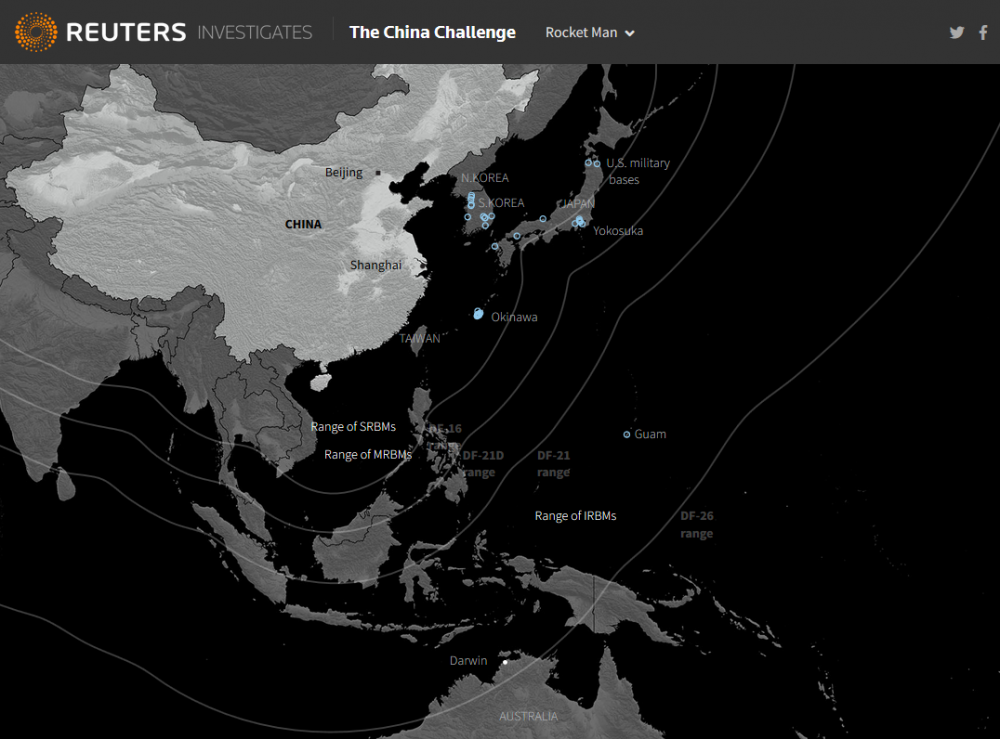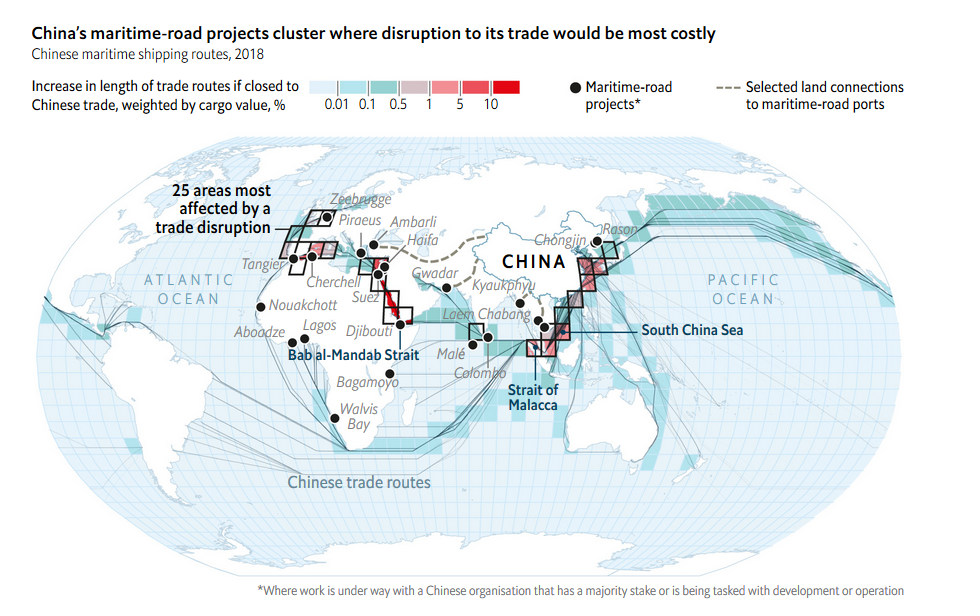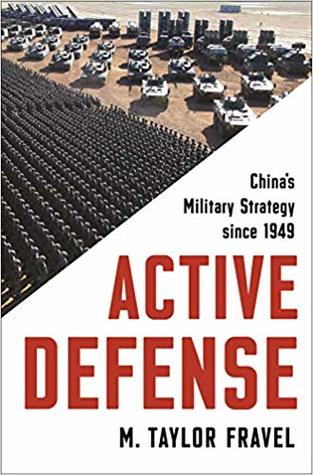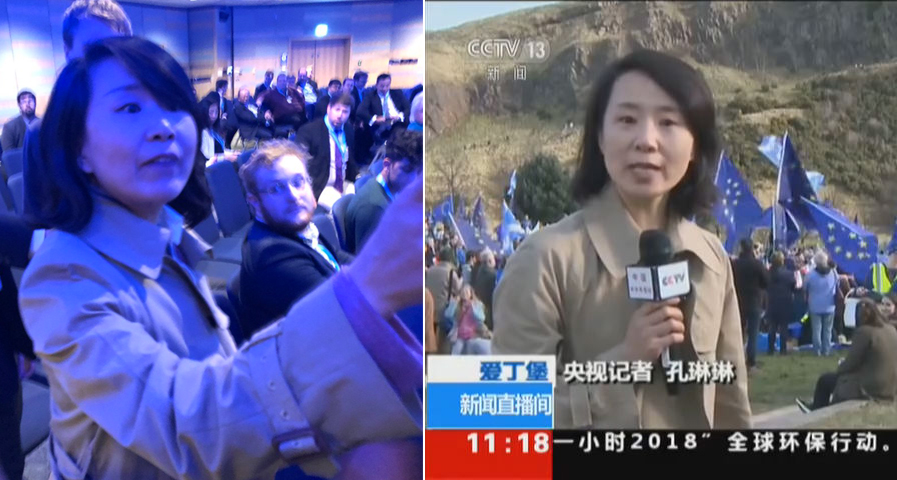笨狼發牢騷
發發牢騷,解解悶,消消愁
正文
戰略與國際研究中心(Center for Strategic and International Studies,簡稱CSIS)一位研究員(公號@GregPoling)最近參加了該機構太平洋諸事專家論壇,他提到除他外所有專家都一致否認南海諸島有任何軍事價值,他持異議,發表了一大堆意見,太長了,我把它附錄在下。
原處還有很多其他專家個人的意見,我也瞎說幾句。
南海諸島的價值主要是地緣政治上的。
第一,南海諸島的軍事戰略價值是有限的。在兩國真正發生衝突時,南海諸島不足以成為一個能堅守的軍事基地。然而戰爭不是那麽簡單的,如果南海諸島守不住,那關島也守不住,夏威夷才行,因為夏威夷才足夠大,這是因為現代戰爭的威力太大。

中國各種導彈威懾區域【4】
第二,南海諸島有關鍵性的戰術價值。萬一在台灣或釣魚島發生衝突,美國必須摧毀對南海諸島的威脅,這大概會為中國贏得一個星期的時間。
第三,這些都不是關鍵的。關鍵的是它們的地緣政治價值。沒有南海諸島,九段線就形如空話,這點必須從曆史的角度來看。17、18世紀英法殖民的時候,就是派幾艘軍艦巡遊全世界,看到一個好地方,就插上一麵國企,關鍵的,是返航後公布一份地圖,這結果是口頭公布我們把這占了。
這看上去沒什麽用,但這正是地緣政治的手段:看看你們誰敢跟我大英帝國或法蘭西共和國搶,如果那塊地很重要,或者對手不太強,以後都可以斟酌是否采取大局軍事幹預的策略。
這一手段現在使用起來不那麽有用,中國既需要建立這麽一個既成事實,但又必須克製,而不至於把美國逼到無可後退的程度,導致兩國發生軍事衝突。過去六七年的曆史證明中國極其高超。
對中國來說,與美國進入軍事衝突,甚至隻是軍事對抗,都是致命的後果,因為中國需要大量的原材料,不論是你死我活還是僵持的對峙中國都必敗,但恰如我以前說過的【1,2】,美國也會打敗,是人類末日,所以不僅中國擔心,美國也擔心,隻是雙方這種玩火的行徑很危險【3】。
這就說到一帶一路的目的,有人說這是為了輸出過剩產能,有這個意思,有人說是控製發展中國家的勞工和消費市場,也掛個邊,最關鍵的,是要把全世界不用軍事,而用經濟的手段拉到自己一邊。這種非軍事的“共同體”不僅針對美國,更是揚長避短,而且在其他國家中有說服力,口號“過好日子”,這是為什麽那麽多國家參與的原因。
至於多少國家隻是搭順風車是無關緊要的,因為要“雙贏”,就得允許他人賺便宜,那樣至少在經濟利益上他們會站在你的一邊,當然中國的口號是“高調是假,好日子才真”,落後國家都覺得可信。近來習近平高調出席國際進口博覽會,吹噓雙十一【6】,大肆宣傳中國消費市場,中央最近搞好進口、開放市場的新政策【7】,都是為了這一目的。

這個跨越全球的網絡好像是要征服世界,《經濟學人》【5】把所有據點列出來,就覺得那隻是個“防線”,而不是進攻:

麻省理工的M. Taylor Fravel對此有專注,他覺得中國的防禦策略是作適當戰略性進攻,進而是為了更好的防守,簡單化叫戰略縱深(但已經國際化了),所以中國本質上是不具威脅的。

所以一帶一路的核心目的是當你把你的產業網,而不是某個產業鏈,連到你的經濟共同體內之後,美國如果進攻,切斷你的供給,也就是侵略了共同體其它成員的利益,這才是要害。
【參見】
知道這多難,見明年(2020)中國總產值是多少?。習近平的大國外交【8】很多跡象都顯示出過度冒進,在西方引起越來越激烈的反感(如【9】),連中國人民老朋友默克爾也幾乎站不住了,威脅到華為的前途。

連記者也成了卒子:

【資料】
【3】世界大戰是如何打起來的?
THREAD > Someone please prove me wrong. During today's CSIS conference on the ECS, SCS, and Pacific Islands I emerged as the clear contrarian on one point: I don't buy the argument that China's artificial islands are useless in a war or would be easy for US forces to neutralize.
First, they're enormous. As I recall @tshugart3 once pointed out, Mischief Reef is about the size of the 495 beltway around DC. Pearl Harbor Naval Base could fit in the lagoon at Subi Reef. That's a lot of ordinance to drop.
We also have to assume that a not insignificant number of missiles any adversary launched at the islands wouldn't make it through the various defenses. I believe @tshugart3 also once did a simulation to this effect based on US experience hitting Shayrat Airbase in Syria.
And as in that case, a strike would likely only disable the airstrips for a short time, unless, that is, you dropped A LOT of ordnance. So where's that ordnance coming from?
Well IF China is first mover in this hypothetical conflict it will presumably have already deployed combat aircraft to the airbases on the artificial islands. Barring a sudden rapid implementation of EDCA this means China will have air dominance.
The only ground-based US aircraft in the region will be 497th Combat Training Squadron in Singapore and a small number of patrol aircraft in Malaysia & PH. Combat aircraft are 1300nm away in Okinawa or 1500nm away in Guam.
If the US happens to have a carrier in the SCS when hostilities erupt, it'll be well within the range of ballistic missiles from the mainland as missiles from the islands (& Chinese subs?). 1st priority will be steaming east as fast as possible all the way to the Philippine Sea
In the face of both the missile threat and Chinese air dominance, every other US Navy ship will likely be heading east too as fast as possible. So that only leaves US submarines in the theater.
US subs could probably continue to operate without detection. But that'll be a lot harder if they start shooting. And if they're going to do that, Chinese surface ships are much more valuable and viable targets than trying to blanket a DC-sized Air Base at Mischief Reef.
Subs launching an attack on the bases would have to do so at risk of exposure to Chinese ASW capabilities (e.g. ships/subs as well as the ASW helibase at Duncan Island if they're trying to hit Woody Island in Paracels too).
So that leaves long-range bombers from Guam. But that would be putting very high value assets at risk in a secondary theater. Secondary because I can't imagine a scenario in which the US would drop bombs on bases in the Spratlys that wouldn't also mean a war in Northeast Asia.
So in that conflict where does neutralizing the Spratlys fall in the order of US priorities? Far below defense of Japan and US forces there, as well as potentially Taiwan depending on the scenario.
So yes, the US technically has the capability to neutralize Chinese bases in the Spratlys. And given logistical and maintenance problems China likely can't operate combat aircraft from the islands for very long.
But for the opening stages of any hypothetical conflict, based on current US posture in the region, the islands give China air dominance, help force US surface ships out of the SCS, and could only be neutralized at a cost US couldn't afford given needs in Northeast Asia.
This could of course be changed with a rapid and full implementation of EDCA, allowing US rotational combat aircraft in PH, combined with positioning US missiles/artillery in PH to hold Chinese islands and ships at risk. But no signs of that happening yet (or under Duterte)
All of that said, I'm neither a war planner nor a naval operator. So what am I missing?
評論
目前還沒有任何評論
登錄後才可評論.




